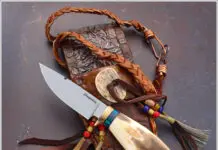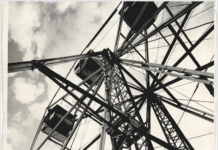Oklahoma home and business owners are known for their pride in landscaping. But how does one go about protecting plants and shrubs during the heat of an Okie summer?
Diane Hambric of OSU’s Tulsa Master Gardeners says that a little extra effort and some continued education is all you need.
“During Oklahoma’s hot, dry months, it is important to pay special attention to your turf, your bedding plants and potted plants,” she says. “This is essential to maintaining a good outcome.”
As might be expected, proper watering can be a lifesaver – but timing of said watering is also important.
“Water turf, bedding plants and potted plants early in the mornings,” says Hambric. “This allows the water to evaporate before nighttime. When you have wet plantings, mold and fungus have a wonderful opportunity to develop. You can save heartache if you water early.”
According to the OSU Extension, plants in Oklahoma typically require approximately one inch of water per week. However, during the summer’s hottest months, those same plants could need double their weekly water supply.
OSU Extension also says that drip irrigation is a great method for keeping moisture in the soil consistent and avoiding runoff and puddles. Wetting the plant’s leaves should be avoided in late afternoon or evening to discourage disease.
Even novice landscapers know mulch can be useful around plants, shrubs and trees – but not everyone knows why. In short, mulch can help thwart numerous potential problems, including reducing moisture evaporation, decreasing soil erosion and runoff, regulating the temperature of the soil and increasing water absorption around the plants. When a two- to four-inch layer of mulch is properly placed, gardeners can expect a reduction in soil temperature of eight to 10 degrees. While organic mulch is highly preferred, most mulches will make a significant difference.
One factor many people do not take into consideration when planting is possible “microclimates.” These are highly localized spots that are different from the average climate and result in areas that alter the norm for your growing environment. Among the most common microclimates are a tree that reduces the area’s temperature by several degrees, a brick wall, which can radiate extreme amounts of heat, or the changes in wind or sun from the area being at the top of a hill or located in a valley. These areas can become the perfect planting areas for a specific plant or shrub that won’t thrive as well in the major part of the planting space.
“Just as important is to plant landscaping beds that are adaptable to our tough summers,” says Hambric. “A full listing, for over 20 years of selections, called Oklahoma Proven, is available online at Oklahoma State University Fact Sheet #E-1052. These selected plants, which include trees, shrubs, perennials and annuals are evaluated in our harsh conditions. These lists should give any homeowner a wonderful start to selecting appropriate planting materials.”
Flora That Thrives in Oklahoma Heat
Looking to create a heat-resistant garden? Try the following:
• Madagascar Periwinkle
• Blanket Flowers
• Coleus
• Dakota Gold Sneezeweed
• Fan Flowers
• Firebush
• Mexican Zinnias
• Purple Fountain Grass
• Summer Snapdragons
• Yellow Bells






















